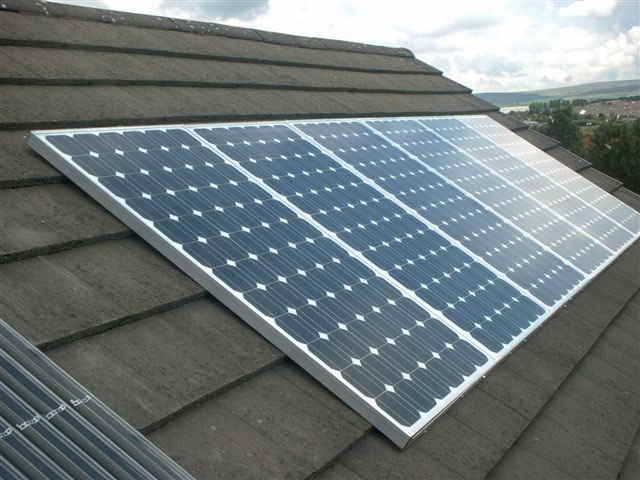Tuesday, March 29, 2011
Solar Panels
Solar panels are a great way to cut down on utility bills by making the most out of one of our most prevalent natural resources, the sun! Solar panels use photovoltaic cells to convert photons into usable energy. The photovoltaic cells are arranged in grid like pattern on the panels which collect sunlight during the day and convert it into electricity. The maximum amount of power that a photovoltaic cell 1/5m in diameter can produce is about 2 amps at 2 volts but that is if it is in direct sunlight at the equator. The amount of power solar panels can produce is affected by the quality of the panel, the materials and technology used to produce the solar panel and the length of time the panel has been in use. Solar panels decrease in effectiveness as they get older so it is important to take good care of them and replace them when necessary. Some of you may be wondering what exactly solar energy is and I have the answer to that. The sun experiences a never ending stream of thermonuclear explosions as hydrogen atoms are fused into helium atoms which results in radiation that strikes the earth. Solar panels then convert the radiation into usable energy and stores it in batteries until we need it. It has been proven that every day, enough solar radiation hits the earth to satisfy our energy needs for an entire year!
Monday, March 14, 2011
Organic Farming
Organic farming is a way to produce food without the use of chemical pesticides and genetic engineering. However, certain pesticides derived from natural sources may be used. Not just any farm can say its organic and you cant convert your farm into an organic one overnight. The requirements for a farm to be considered organic are as follows:
- You can not use any of the prohibited substances on your land for at least three years before the harvest of your first organic crop
- Genetic engineering, ionizing radiation, and sewage sludge is prohibited
- Soil fertility and crop nutrients will be managed through tillage and cultivation practices, crop rotations, and cover crops, supplemented with animal and crop waste materials and allowed synthetic materials.
- Preference will be given to organic seeds and other planting stock, but a farmer may use non organic seeds and planting stock given certain conditions
- Crop pests, weeds, and diseases are to be controlled primarily through management practices including physical, mechanical and biological controls
- When the above practices are not enough, botanical, biological or synthetic substance that has been approved on the National list can be used
Tuesday, March 8, 2011
The Smartest Home on the Planet!

This is a picture of the Smart Home located at the Museum of Science and Industry in Chicago. I was lucky enough to have the chance to tour the home when I went to Chicago in November with a class.
Pretty much everything about the house is green, which is amazing. The home wasn't built like most homes today, it was manufactured in modules at an off-site location. Everything the house is made of is sustainable; including its bamboo floors, Forest Stewardship Council certified wood and recycled glass tiles. The energy efficiency of this place is insane! There are solar panels on the roof and a wind turbine that produces most of the energy the house needs. Other things that contribute to the energy efficiency of the home are its huge windows, sliding doors and sunshades that help with heating an cooling. All of the appliances in the home are Energy Star certified which also helps save energy. Even the toilets in this house are green, the water used in the toilets is from either rainwater or water waste from the washing machine and shower.
The house has so many green components it is almost impossible to name all of them, and frankly, most of us wouldn't understand them anyways. There are however a few things I remember from the tour that I thought were especially cool. Throughout the house there are pieces of furniture that were made from a giant bur oak that fell during a severe storm. Another awesome thing I saw was the counter top in the kitchen made from recycled glass oven doors, who knew you could turn old oven doors into a counter top! But that wasn't the only cool thing about the counter top, there is a certain spot on it that will power small appliances like a blender just by sitting it there, no plug-in needed! Below are a few pictures from inside the smart home...




Subscribe to:
Posts (Atom)
